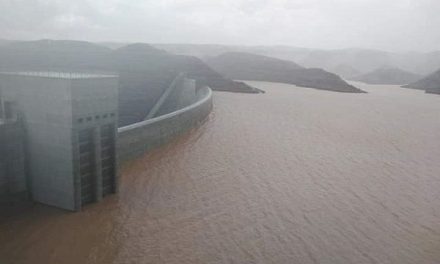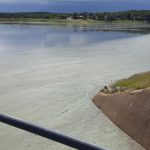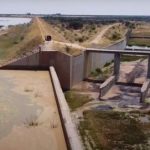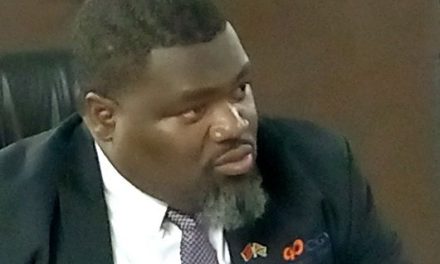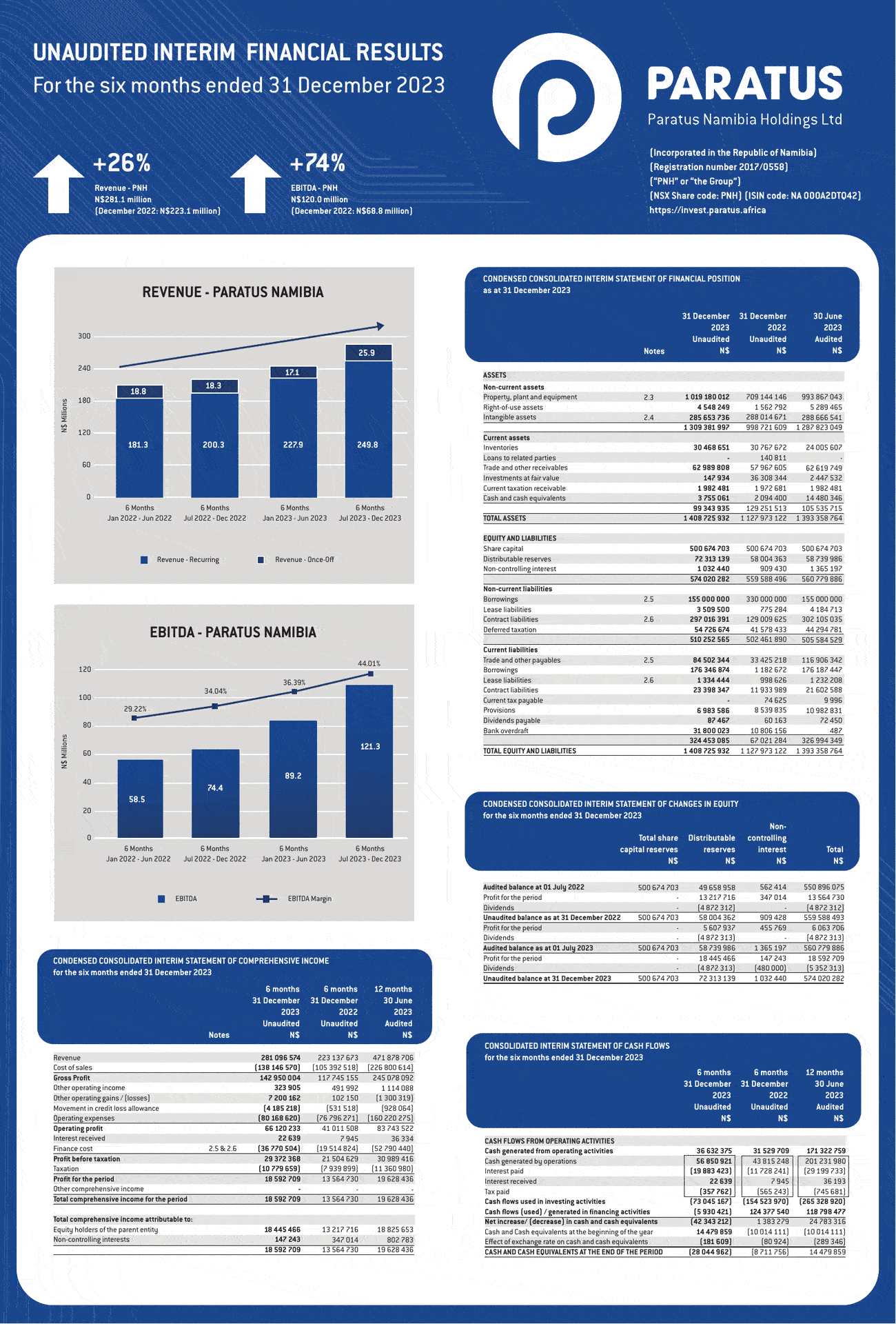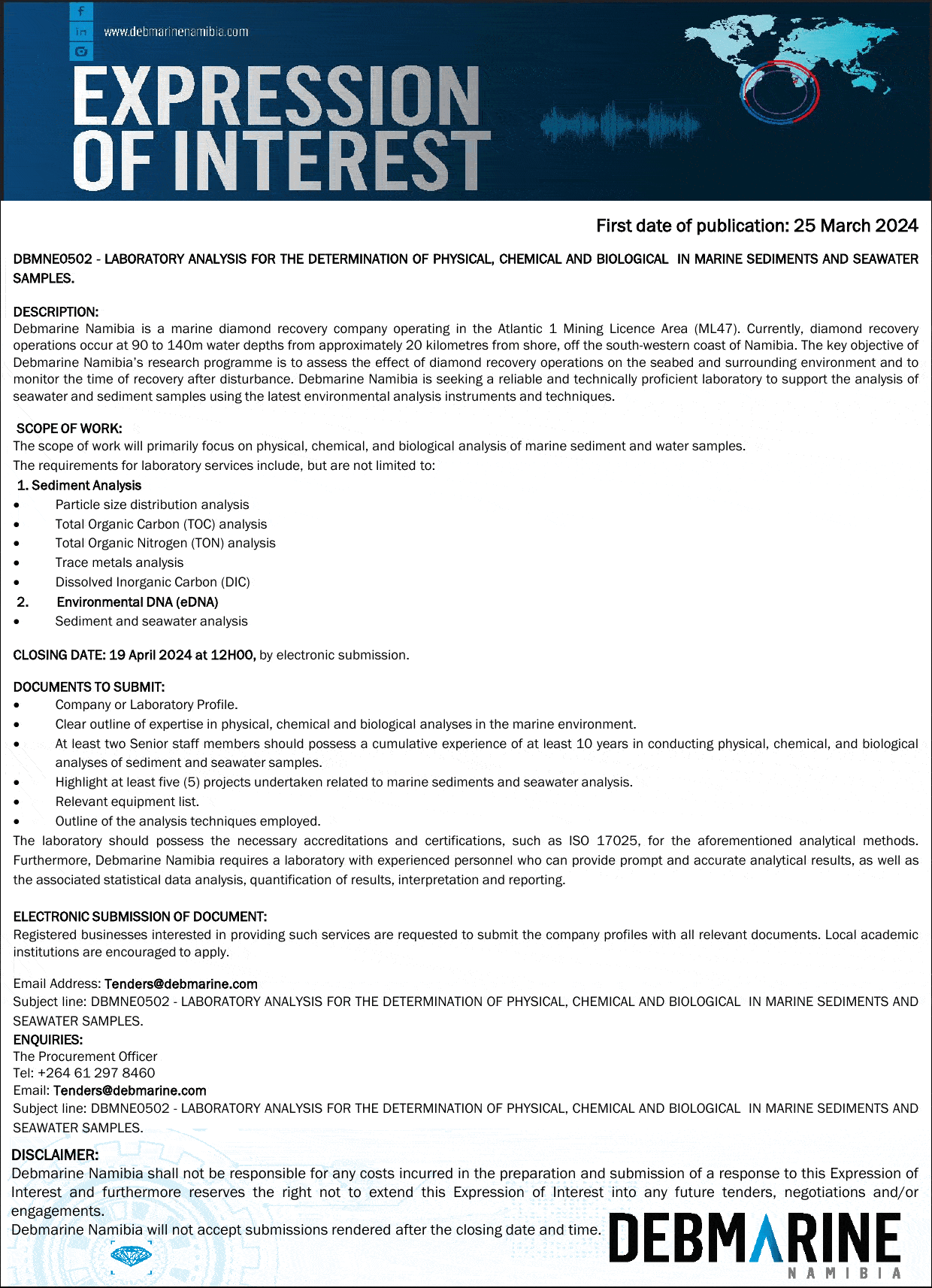
Sea territory claim stuck in process
More than five years after submitting a claim to extend Namibia’s sea territory beyond the 200 nautical mile Exclusive Economic Zone, the Surveyor General is none the wiser, saying the claim is still floating in the procedures required by the UN Convention on the Law of the Sea.
Namibia submitted a bid to extend its territorial sea area on 12 May 2009. The Economist probed the Surveyor General, Uzochukwu Okafor in an effort to establish the progress made thus far.
Meanwhile, as the submission is still being evaluated, the Ministry of Lands and Resettlement has been making all the necessary arrangements to build capacity.
Commenting on the matter, Okafor said: The application to extend Namibia’s sea territory has not been ratified. Namibia was the 50th country to submit her application for an extended continental shelf. To date, [the] Commission has been established for 31 submissions, meaning that Namibia still has at least 18 submissions behind.”
The survey to determine the submarine limits of the continental shelf was completed in 2003 with the assistance of the Brazilian navy.
An earlier survey first had to determine the exact location of the so-called baseline, which demarcates the separation between mainland and ocean. All other measures are done from this line.
In the submission report drafted by the Commission on the Limits of the Continental Shelf, data submitted by the Ministry of Lands and Resettlement in support of the bid established that the outer edge of the Namibian continental margin extends beyond 200 miles from the territorial sea baseline in a broad submarine region comprising a total of 1,062,935.85 square kilometres.
The relative contribution of the outer continental shelf to the total area under jurisdiction will increase by approximately 55%. Meanwhile, an unresolved border dispute may impact Namibia’s claim for additional sea territory. The indicated sea territory runs southwards of the Orange river estuary with possible indications that its claim may lie in South African waters. A bone of contention exists with regards to the international boundary, with neither government ratifying the text of 1994, drawn up by the Surveyor Generals of the respective country’s.
The Namibia Constitution of 1990 in Article 1(4) states that its southern boundary shall extend to the middle of the Orange River, in line with international convention while the South African government argues that the boundary lies on the northern shore, effectively shutting the Orange River out. A similar dispute over the departure angle of the line in the sea, has not been resolved.
The two government’s have however gathered around the negotiation table with respect to the analysis of their submissions by the Commission on the limits of the continental shelf. Cabinet established two committees to oversee the application made up of the Permanent Secretary in the line ministry, a range of experts in the fields of international law, hydrography, geology, geophysics, and surveying amongst others from various ministries, and the Namibia Petroleum Corporation.
While the bid drags on, Okafor indicated that his ministry was hard at work building capacity and pointed out that various workshops had been conducted, the most recent carried out in August 2013 while another is slated a month from now which will be organised by the International Boundary Research Unit of the United Kingdom. Okafor went on to state that the process was running smoothly. The convention entered into force for Namibia on 16 November 1994.















